Naked Science Question and Answer
Brightening up the darker corners of your science knowledge this week are Chris, Phil and Kat, who look at colour-blindness in dogs, harnessing heat energy from the centre of the Earth, how glow in the dark motorbikes could save lives, and the erasable tattoos that wipe away the memory of the ex we would rather forget... Also on the show, Ron Hale-Evans talks about ways to improve memory, Michael Stebbins reveals how his book Sex, Drugs and DNA aims to fight back against those who stand in the way of science, and Anna Lacey learns to play the wine glasses in Kitchen Science.
In this episode
Ta Ta Tattoo
The days of indelibly pledging your undying love for someone by tattooing their name across your forehead, only to regret it later, are finally over. Thankfully for those tempted to have "sharon forever" etched into their dermis, dermatologist Rox Anderson, from the Massachusetts General Hospital in Boston, has developed a way to produce erasable tattoos. He has found a way to encapsulate tattoo dyes within tiny polymer beads measuring between 1 and 3 thousandths of a millimetre across. When these "dye capsules" are scratched into the skin they are picked up by skin cells which then take on the colour of their encapsulated cargo, forming a tattoo. But if you decide subsequently that you don't like what you see, or "Sharon" becomes "Sherin" (or even "Kevin"), a single blast with a laser can wipe the slate clean. It works because the laser breaks open the capsules, spilling the coloured contents that they contain, which is then absorbed and broken down. This is a marked improvement on existing tattoo technology which, in addition to using dyes that are also used in car paints and contain toxic chemicals such as heavy metals, can only be removed 50% of the time and only then following fairly aggressive laser skin treatments.
The Female of The Species
Here's a tale of sex and death - but involving spiders rather than people. Scientists at Aarhus University in Denmark have been studying a remarkable species of spider known as the nuptial gift-giving spider, or Pisaura mirabilis, to give it its Latin name. The female spiders of this species will often attempt to eat the males before or during mating. This is obviously not a good thing for the males, especially if they get munched before they've managed to sow their seed. But the gift-giving spiders have evolved a cunning strategy to get round this. The male spiders turn up with gifts of food for the female spiders, a bit like human males turning up with a box of chocolates. The male spider then "plays dead" to avoid being eaten. But while the female is distracted by eating the present, he sneakily mates with her. So everyone's a winner - the males get to mate while the females get the equivalent of spider chocs. Isn't biology amazing?
Glow-tor Bike
Japanese manufacturer Yamaha have come up with a way to make their motorcycles safer and easier for other road users to see - by developing a new a glow in the dark film. The phosphorescent polymer soaks up UV rays from sunlight like an energy sponge. When the UV interacts with chemicals in the material it temporarily catapults electrons to a higher energy state. When it gets dark the electrons slowly drop back down to their former unexcited state, releasing the energy they had locked away in the form a soft glow. Yamaha have come up with a vacuum process that can apply an even layer of the phosphorescent material over irregularly shaped farings, engine covers or cowlings. They plan to wheel out the technology in May (2006) initially on their EC-02 electric scooter; but above all they hope that their new range of "glow-tor" bikes will make the roads a safer place for riders.

- Are there passive smoking risks from e-cigarettes?
Are there passive smoking risks from e-cigarettes?
 |
|---|
As electronic or e-cigarettes grow in popularity, scientists are racing to find out how they affect health, not just of users but for those around them.
Although e-cigarettes - battery-powered devices that deliver nicotine and flavourings to users - don't contain tobacco, their emissions do contain nicotine, benzene and other carcinogenic compounds, according to Dr Esteve Fernández of the University of Barcelona, Spain.
Dr Fernández is running the EU-funded TackSHS project which aims to find out more about the effects of second-hand emissions - whether from e-cigarettes or traditional cigarettes - on people's health, taking into account differences in lifestyles, economic conditions and levels of legislation.
'Electronic cigarettes don't produce combustion of tobacco - in fact they don't even contain tobacco,' he said. 'But because most users use charges containing nicotine they do produce tobacco-specific nitrosamines which are carcinogenic.
'We know that the aerosols from e-cigarettes contain nicotine that can be assimilated by bystanders exposed passively to the aerosol and also benzene and other compounds present in the aerosol.'
The project, which started in November, will be looking at the different health effects produced by the aerosol emissions - often referred to as smoke or vapour even though they are in fact neither - from e-cigarettes.
The study will also be examining the differences between electronic cigarettes and traditional cigarettes in terms of health, and also the best way of studying the impact of what is a relatively new product.
'In previous studies researchers have tried to study e-cigarettes as traditional cigarettes but this is an error,' Dr Fernández said. The emissions from e-cigarettes not only contain different compounds to traditional cigarettes, but they may also be absorbed differently.
Dr Fernández and the rest of the team will be carrying out their research by asking people in 12 European counties to complete surveys as well as by monitoring the levels of second-hand smoke in their environment.
Legislation
Information from the study should help decision-makers modify legislation to better protect the population, whether by protecting people from second-hand smoke by imposing stricter rules on, for example, smoking in outdoor areas near schools or hospitals or creating entire smoke-free environments such as university campuses.
'I believe our impact will be at the societal level. We want to produce information that will be used by decision-makers in order to modify legislation but not only that, to invest more in prevention and in information for the population,' Dr Fernández said.
Understanding more about the effects of e-cigarettes is particularly important in Europe, where the World Health Organization says 28 % of adults smoke tobacco, the highest level among its regions.
E-cigarettes are often used by smokers of traditional cigarettes to help them quit. However, not only is little known about the health risks of using e-cigarettes, but there is also debate about whether they in fact encourage non-smokers to progress to smoking traditional tobacco cigarettes.
 |
|---|
Another question is whether the process of refilling them exposes users to harmfully high levels of nicotine.
Still, e-cigarettes are gaining popularity fast - Euromonitor last year estimated the e-cigarette market was worth almost EUR 5.5 billion worldwide in 2014 with 13 million users, mostly in the US and Europe - as big as the global market for fruit and herbal teas.
In May 2016, the EU's Tobacco Products Directive (TPD) came into force, which lays down rules governing the manufacture, presentation and sale of tobacco and related products, including e-cigarettes.
Among other things the TPD banned companies from advertising e-cigarettes as a way to give up smoking and set limits for the amount of nicotine they could contain.
Dr Constantine Vardavas of the European Network for Smoking and Tobacco Prevention (ENSP) is leading the EUREST-PLUS project, one of a number of projects funded under the Horizon 2020 programme to gather more evidence on the risks of e-cigarettes. He is aiming to take advantage of the new rules to assess the impact of public health legislation on the population.
'This was a wonderful opportunity to monitor the implementation of a public health policy across Europe and whether you see impacts on health,' he said. 'Can policy impact the actual population?'
The researchers are following a group of subjects recruited before the new legislation came into force and will monitor them in the years to come to assess aspects including the effects of e-cigarettes on smoking behaviour, whether there is an increase in attempts to quit smoking, and the effects the legislation has on the perceptions of smoking.
Insufficient evidence
Dr Vardavas says that more information is needed on e-cigarettes. 'It's an area in which there is insufficient evidence and that is why we want to investigate how they modify smoking, whether the e-cigarette legislation to protect consumers and rules to protect non-users such as child-proof caps, actually have an impact on a population basis.'
Even though Europe-wide legislation is in place, there are differences in the levels of regulation, for example on plain packaging or e-cigarette sales, between Member States, which gives the study a 'natural randomisation' which will be useful for the researchers, he says.
'We're talking about a huge population - of 508 million people - being covered by one legislation so it's very important to assess whether legislation protects public health,' Dr Vardavas said.
'Our hypothesis is that if implemented appropriately across European Member States, the TPD will have a significant impact on public and population health,' he added.

Making music with wine glasses
Anna - Hi there yes and welcome to Ely. This week we're at the King's School in Ely and we're going to be doing some really amazing experiments with some music and of course a lot of science thrown in there for good measure, because that's what we're all about. This week we've got our helper Wendy. Wendy. What are you doing here today?
Wendy - We're going to do some experiments here today about resonance and vibrations but using a couple of very simple kitchen props.
Anna - So you heard it here. We need you to get your equipment out so you need to listen very very carefully because it involves things that you have in your kitchen. But first, we're going to speak to some of our student helpers. Do you want to tell us your names and your ages please?
George - Hi I'm George and I'm thirteen.
Anna - Hi George. And yourself?
Tom - Hi, I'm Tom and I'm thirteen.
Anna - And what's your favourite thing about science Tom?
Tom - I like the practicals.
Anna - And what about you George? Are you a practical man or a theory man?
George - I like practicals, especially burning stuff.
Anna - Good answer. So Wendy, what is it that people are going ot need to get hold of from their kitchens today?
Wendy All they're going to need to join in if they want to try this experiment out is just a wine glass.
Anna - Just a wine glass. Well that's easy. So go out there now and find a wine glass, and that's a proper wine glass, not plastic I take it?
Wendy - Yeah that's right. It's quite good if it's fairly thin glass; nothing too chunky. You do need access to some sort of liquid too. Water will be fine.
Anna - Ok, so we've got our wine glass here. What do you want George and Tom to do with it?
Wendy - George, if you could just fill up the glass for us, about three-quarters full.
Anna - George is just filling up the wine glass. I think it's almost about right.
Wendy - And if you just want to pass that to me. Now what're going to do is use the wine glass as a musical instrument. There's a very famous experiment some people might have heard of where an opera singer sings a note and makes the glass shatter. I wish I had a good enough voice to do that, but I haven't so we're going to play the wine glass in a slightly different way.
Anna - Ok, so are you going to get Tom to play the wine glass?
Wendy - Yes. I'm going to put the wine glass on the table to give it some stability. To play it, Tom, you have to put one hand on the base to keep it steady. Sip a finger from your other hand in the water and then rub it around the rim of the glass. Don't press too hard, just rest your finger on the rim.
Anna - Ok so this is one of those well-known party tricks where you play the wine glass and Tom's going to try it now.
Wendy - And when you're very close up you can actually see some of the vibrations on the water too.
Anna - Well done Tom. That was really great. So what's the next part of the experiment. Obviously we don't want to play a tune with one note. How can we change it?
Wendy - Yeah, music would be pretty dull if we only had one note to listen to, so what we're going to do is change the glass and set people the challenge of predicting scientifically what's going to happen. It's a very simple change we're going to make. All I'm going to do is drink about half of the water out of the glass and I want people to think about what will happen to the note.
Anna - Ok so while Wendy glugs away at some of the water out of that wine glass, I'm going to ask George, what do you think will happen to the note now that Wendy has drunk some of the water?
George - I think the pitch will change but I'm not sure which way.
Anna - You're not sure which way, but that's a good prediction. Tom, do you have any ideas about whether the note will get higher or lower?
Tom - I think the note will probably be higher.
Anna - And why do you think it will be higher?
Tom - I'm not sure but I've just got a feeling that it might be.
Anna - Well we will see exactly what happens to the note. Wendy has now finished her drink but we're not actually going to be finding out right now. We're going to get George and Tom to wait here in their school in Ely before we find out exactly what happens. Until then, we want you to get hold of a wine glass, get hold of some water, dip your finger in it, make the sound, drink half of it and then make the sound again. We then want you to tell us what happens. We'll be back later in the show, so until then, back to the studio.
LATER…. Anna - Hi there yes and welcome back to the King's School in Ely where we've been doing some experiments with wine glasses. Hopefully you have at home too. In the earlier part of the show we filled a wine glass with water and one of our helpers Tom ran his finger around the top and made a noise. Then what we asked you to do was drink half of the water from the glass and play the note again. Now we're going to find out exactly what happens. So Tom, can you now make the noise again? A beautiful sound I think you'll agree. Now we want to see what happens to the noise when your pour out some of the water. Do you want to pour some of it down the sink then Tom? Is that about enough Wendy?
Wendy - Yes that's fine.
Anna - Ok, now what we want you to do is make the noise again and see how it's different. So George, you heard the noise before and you heard the noise after we got rid of the water. What happened?
George - It got higher.
Anna - It got higher and I think Tom said that that's what he thought might happen. But you didn't know why. So Wendy, why does running your finger around the top of the glass make a sound in the first place?
Wendy - Well the important thing here is a force called friction. When you rub any two things together there's a certain amount of friction where things stick. Now you've wetted your finger it's quite slippy but there's still a tiny amount of sticking and slipping going on as you do that. So each time your finger grips and then slips all of a sudden, it gives a bit of energy to the glass and makes it start to vibrate.
Anna - What happens then when something vibrates? How does that make a sound?
Wendy - Well depending on how much stuff you've you got, it defines how fast the vibrations will be. Everything of different sizes likes to vibrate at a certain frequency and that's resonance. Everything has a natural resonance that it likes to vibrate at. If you take a glass and a certain amount of water, then it wants to vibrate at a certain speed which gives us a certain note.
Anna - So how come that when you've got less water in the glass, the note gets higher?
Wendy - Well it's quite easy to think about and is something everybody has probably tried. If you get a ruler sticking out over your desk, if you've got a long bit of the ruler and you twang it, it wobbles quite slowly and gives you a low note. As you make the ruler shorter, it goes faster and gives you a higher note. So when you've got less water and less stuff like the short ruler, it's wobbling fast and gives you a high note.
Tom - What would happen if there was no water in the glass?
Anna - Ooh good question. Wendy, what would happen?
Wendy - It often depends on the glass itself but it should in theory work with no water at all because it's effectively just the glass itself that's vibrating then. But the note would be a lot higher. So if we took all the water out of the glass now, the note would still carry on getting higher.
Anna - That sounds to me very similar to if I blow over a milk bottle, for instance. Is that the same principle?
Wendy - It's a similar experiment but there's a key difference. We've got a milk bottle here and it's almost full. To make this vibrate, rather than running my finger around the bottle top, what most people do is blow across the top.
Anna - Ok.
Wendy - Now I'm going to empty some water out. Now remember when I did this with the glass, what happened to the note?
George - It got higher.
Wendy - That's right. Now let's see what happens in the bottle.
Anna - So Tom, what happened then?
Tom - It got lower.
Anna - Now that's the opposite to what happened in the wine glass. That's absolutely insane! Why did that happen?
Wendy - It's a bit sneaky isn't it?! The key difference is that the music is being made in a different way. When we rub the wine glass, the movement of the glass and the water is what's vibrating. When we take water away, we've got less stuff and a higher note. With the bottle, instead of touching the bottle, we're blowing across the top so it's the air that's vibrating this time and not the water and the glass.
Anna - So when you've gone and poured half the water down the sink you've actually got more air, so that's like when you have more water in the glass, and the note is also lower.
Wendy - Exactly, it's the opposite result.
Anna - Wow, that's absolutely amazing. Thanks very much Wendy. George and Tom, what did you think of the experiment? You first George.
George - Yeah it was interesting.
Anna - And Tom, have you done anything like this at school before?
Tom - No, not really.
Anna - So next time you learn about sound at school you can be the envy of all your friends by being an absolute super-brain. Well thanks very much Wendy, Tom and George and thanks to the King's School in Ely for having us here today and we hope you all enjoyed it too. Back to the studio and we'll see you all next week.

- Science Update - Elephants, OIl and Memory
Science Update - Elephants, OIl and Memory
with Chelsea Wald and Bob Hirshon from AAAS
Kat - Now we're going to hop over the pond and have our science update from Chelsea Wald and Bob Hirshon who are from the AAAS, the American Association for the Advancement of Science. This week we're going to be finding out how elephants are helping the oil crisis, and also meet the woman who never forgets. But first, it's time to find out the answer to the riddle that Chelsea set us last week.
Chelsea - This week for the Naked Scientists, we're starting off answering last week's riddle. Bob, pray tell, what is brown, sounds like a bell and could help solve the oil crisis?
Bob - Elephant DUNGGGG! Yes, that's right, elephant dung. Now you may ask how is elephant dung going to solve the oil crisis. You see, ethanol from plants like corn is a promising alternative fuel and now scientists in the Netherlands have developed a more efficient way to produce it using a gene from a fungus found in elephant dung. Industrial microbiologist Ton van Maris at the Delft University of Technology explains that baker's yeast can convert plant sugars in to ethanol but couldn't metabolise the indigestible wood sugars, until now.
Han - By taking this gene from the fungus we isolated from the elephant dung and putting it into baker's yeast, we have created a yeast strain that under laboratory conditions can produce almost twice the amount of ethanol from plant biomass as a normal yeast strain would do.
Bob - He says that because elephants eat so much roughage, their digestive tracts are full of micro-organisms that can tackle the tougher sugars.
Chelsea - Eugh. Well next we have a fascinating case study. We hear a lot about patients who lose their memory either due to an accident or a disease like Alzheimer's. But here's a patient with an abnormally good memory.
Bob - Do you remember what you did yesterday? Or how about May 10th 1996? For a forty year old woman known as AJ these questions are equally easy. Psychiatrist James Mcgarr of the University of California at Irvine has been studying her previously undocumented super memory. For example, given no advance warning, she was able to rattle off the dates of Easter for the past twenty years.
James - And she's Jewish and would have no specific reason to pay attention to Easters. Without any effort at all she immediately gave us the dates. She made a mistake by two days an then quickly corrected it. She also told us what she was doing on each of those days, which we verified by turning to a diary she had kept over the years.
Bob - Remarkably, he says that AJ doesn't rely on rote memorisation or mnemonic devices. She just vividly recalls each day as if it were yesterday. His team plans to use brain scans to find out if her memory is organised differently to other people's.
Chelsea - That's all for this week. Next time we'll talk about the latest things neurologists are talking about keeping your brain happy and healthy. Until then, I'm Chelsea Wald.
Bob - And I'm Bob Hirshon for AAAS, the science society. Back to you Naked Scientists.
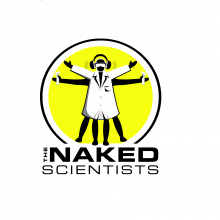
- How To Improve your Memory
How To Improve your Memory
with Ron Hale-Evans, author of Mind Performance Hacks
Chris - Now what's your memory like? People often ask me how I manage to remember so many things, and the answer is that I just have to read them and they sort of stick somewhere. But now to tell us how to all have an incredibly good memory and maybe also how to have a photographic memory, here's Ron Hale-Evans from the US, who has written the book Mind Performance Hacks. Hello Ron.
Ron - Hi Dr Chris. Thanks for having me on the show.
Chris - Great to have you with us. Come on then, tell us about your book. What's it all about?
Ron - Well it's about improving not just your memory but improving your creativity and general mental fitness by using clever tricks, or what we call hacks.
Chris - This is not just a glorified self help book. These things actually do work don't they.
Ron - Yes, I think so. Some of them are thousands of years old and are time-tested, and others are very new and use the newest cognitive research.
Chris - And have you yourself got a photographic memory?
Ron - No, I don't have photographic memory. In fact I have rather a poor memory at times but I use some of these hacks to improve my memory and I'm able to do things I wouldn't normally be able to do such as go to the grocery and not have to use a grocery list.
Chris - Ok, are these things you've worked out for yourself, so that they're only going to work on you or if people read your book and apply these things, are you reasonably confident that they're going to work for everybody?
Ron - Well there are 75 different hacks in the book and not every hack in the book will work for every person. But I think there's something in the book for everyone and I think everyone will find something that they can use.
Chris - Ok, so do you want to run us through a couple of them? I know you have a couple in mind that you were going to tell us about.
Ron - Sure, well I was talking about a grocery list a minute ago. As you were mentioning earlier in the show, the human brain is incredibly visual. Our distant ancestors didn't use abstract numbers or other abstract information, but they could certainly visualise concrete shapes of things like predators or food. So you can use that ability to process sensory information by turning a numbered list like a shopping list into concrete shapes that you can remember.
Chris - So you visualise the thing you want to remember, link it to something else in your mind and it makes it easier to remember.
Ron - That's right.
Chris - So come on then. Give us an example of how you would do that for a few objects.
Ron - So let's say that you have three items you're trying to remember. You associate the number 1 with a pencil because it's shaped like a pencil, and the number 2 with a swan because it's shaped like a swan, and the number 3 with a heart because it's shaped like the top of a heart. Let's now say you want to remember the items bread, milk and soup. You might imagine, instead of a pencil, a loaf of French bread to write a letter to someone. You might imagine a milk white swan swimming in a lake of milk.
Chris - But you've still got to remember all these things Ron.
Ron - Well that's true but you're relying on information that's already in your brain like shapes to remember things that you're trying to remember on the fly like a grocery list.
Chris - The one thing that I really liked was your method for learning Morse code because as someone who used to be very interested in radio myself, I found Morse code impenetrable for some reason. So what's your answer there?
Ron - We took a hack that was described by the children of Frank Gilbert, who was an efficiency expert at the turn of the 20th century. He came up with a way of remembering Morse code letters by using English words. For example, the Morse code letter A, which is dot - dash, is remembered by the word a-bout.
Kat - So you're using the letters as a word pattern or rhythmic pattern.
Ron - yes. We're using the stress of the words.
Kat - So can you remember the whole of the Morse code?
Ron - Yeah, pretty much. Occasionally I have to go back to refresh my memory because I don't have that much occasion to use Morse code in ordinary live.
Chris - What's dot dot, dash dash, dot dot, Ron?
Ron - Erm…
Chris - You can't get that one wrong! It's SOS!
Kat - People have different ways of remembering things because I can remember facts but I can't remember people. Have you got a quick tip for me to remember people?
Ron - Well there isn't one in the book but I can tell you that the way to do it is to remember the person with an image.
Kat - So I have to associate them with something.
Chris - What would you associate with Kat? I would associate her with a pair of smelly socks, but that's just me. Ron, thanks for coming on the programme and joining us to talk about your book.
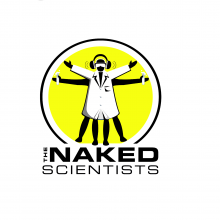
- Prize Winner At The London Weather Centre
Prize Winner At The London Weather Centre
with Jasmine Watts from Cambridge
Kat - Three weeks ago we had Alex Hill from the London Weather Centre on the show who talked about how to predict the weather. The prize winners were Richard Fusniak and his granddaughter Jasmine. So they went down to the London Weather Centre and learned how to do their own weather report. So here making her radio debut and braving the winds of London is ten year old Jasmine.
Jasmine - Hello. I'm Jasmine Watts from Cambridge, broadcasting live from London Weather Centre. Here is the forecast for today for the south of England. Here in London it will be a cloudy afternoon. The temperatures will be thirteen Celcius and 55 Fahrenheit. This weather will be warmer than yesterday and the rainy showers will be mostly in the Midlands later today. That's today's weather and back to the studio.
Kat - And that was Jasmine who's doing her first weather report. So hopefully you'll make it as a weather presenter!
SEX, DRUGS AND DNA - Dr Michael Stebbins, Director of Biology Policy for the Federation of American Scientists
Chris - Now we're going to be joined by Michael Stebbins who will be doing a talk in Cambridge this week. Now Michael, you've called your talk Sex, Drugs and DNA after this pretty impressive book you've written. Tell us about what you'll be covering in your talk and why it's so important.
Michael - The talk is going to be about the book and some of the topics within it. I usually leave it up to the audience to choose to talk about sex, but it covers stem cells, global warming, intelligent design, bioterrorism, contraception, the drug industry and healthcare.
Chris - So a pretty controversial index of problems then.
Michael - yes, and it really explains the science behind each one of these things and exposes the liars and miscreants who have been pushing policies that are against what we know about science.
Chris - To what extent is this going to be relevant to people in the UK because that's what people are going to be asking. It's great that you're coming to the UK to talk about this, although intelligent design is more of an issue in the US than in the UK.
Michael - Well I'm not so sure that intelligent design is just a US problem. It seems to be spreading although it is centred in the US at this point. Certainly the other issues relevant in the US really do end up cropping up in the UK and Europe. The US ends up being a weather bell for what's going to be happening in Europe. I think a lot of the issues, including stem cells for example, are controversial in both places. And the drug industry most recently has also been quite controversial in the UK.
Chris - Well look Michael, I'm really looking forward to seeing you on Wednesday. Should be a good lid lifting exercise.

- Passive Smoking
Passive Smoking
Researchers at Cincinnati Children's Hospital medical centre have found that passive smoking may affect children's behaviour.
The scientists studied 225 children between 5 and 11 years old, who were exposed to an average of 14 cigarettes per day. The team found that the kids exposed to the most smoke had more behavioural problems, including anxiety, depression and bad behaviour.
Although the researchers studied children with asthma, they think that their results probably apply to all children - and there may be other social factors at work. Importantly, the same team previously found that passive smoking could also affect children's brain skills, including reading, maths, logic and reasoning.
Smoking accounts for a quarter of all cancer deaths in the UK, and passive smoking is thought to cause hundreds more every year. So maybe that's now another reason to stub out the fags...
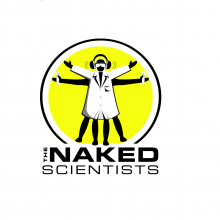
- Can we harness Earth's heat to power the planet?
Can we harness Earth's heat to power the planet?
It is already is. This is why Iceland's a producers of bananas, cecause it's a centre of geothermal activity. It's an area on the Earth's surface where heat from inside actually heats up things like water, so you get very hot geysers, hot rocks and areas of the earth. You can harness that heat, and in Iceland they use it to power their greenhouses for growing bananas. In other parts of the world as well there is geothermal heat being used to generate energy. In New Zealand, it's already used. The way you do it is you pump water down to where the rocks are hot enough and the water comes up at very high temperatures and very high pressure. You can then either send that water off as a direct distribution or you can pass it through a heat exchanger and then distribute that heat around people's houses, hospitals and places that need energy. It's great for bathing in too. However, this is only used where it's economical and the rocks are close enough to the surface.

- Why does the clock lag a bit on my digital television?
Why does the clock lag a bit on my digital television?
There is and they rely on Einstein's theory of relativity to get around the problem with GPS, but not really for everybody because it depends how far the signal has to travel. The only way round it is to provide local time signatures. And they're going to switch off the analogue signals so it's going to cease to be an issue and we'll all be slightly out of time. The thing is, we live in a world where the average person has their watch out by several minutes relative to Greenwich Mean Time, so a fraction of a second disparity on the television is probably not going to affect people's lives if I'm being really honest.

- Despite being blind for years I can still see in dreams. Why?
Despite being blind for years I can still see in dreams. Why?
Humans are incredibly visual creatures. We devote over a third of our brain power just to being able to see. That makes us quite similar to dogs, although dogs of course live in less of a visual world and more of a smelly world. A dog's nose is 3000 times more sensitive to smell than a human. When you go to sleep and have a dream, the regions of the brain you use during the day to do various tasks light up if you have a brain scan while dreaming. If you look at people who are dreaming and look at the visual areas of the brain you'll see that they're becoming very active. When you wake people up when they're showing those signs and ask them what was happening, they'll say that they were in a field or walking around and experiencing something. They can give you a pretty graphic description. When you're blind, often what happens is that when you've seen once, the bits of the brain that used to do the seeing have laid down a pretty powerful memory of what's out there in the world around you. You know what colours there are you know what objects look like. When you go to sleep, although there's no direct input from the eyes now, still can generate those images and they're every bit as real as they were when you really were seeing. I have a lot of blind friends that they actually love going to sleep because it reminds them of what seeing is like, and it also reminds them of what colours are like.

- People say that dogs are colour-blind. Is that a fact?
People say that dogs are colour-blind. Is that a fact?
It depends on how you define colour-blind. The version of that urban myth that I've heard is that they see in black and white, and that's just not true. If you look at a dog's retina, the thing that turns light into neurochemistry or electrical signals, there are structures in the dog's retina called cones. These are identical to structures in the human retina called cones that can see coloured parts of the visual system. So dogs can definitely see colours. But if you analyse those cones, they paint a very different picture of what dogs see of the world than what humans do. The best description is that dogs are the equivalent of human red-green colour blindness. So they have a spectrum of colours that means they are pretty good at seeing greens, violets and blues, but at the red end of the spectrum they're less good. They probably appreciate it as a slightly different colour, such as yellow. But they're certainly not colour blind.

- Can you please repeat how many tonnes of blood the heart pumps in twenty four hours. ?
Can you please repeat how many tonnes of blood the heart pumps in twenty four hours. ?
The heart pumps around fifty times per minute. It pumps about five litres of blood a minute. So if you times that by sixty for the amount of blood in an hour and then times it by 24 for the number of hour in a day, it's about 7500 litres of blood every single day. Blood is about 1 gram per centimetre cubed, which means it's a thousand grams per litre. That means that if you pump 7500 litres in a day, that's 7.5 tonnes of blood pumped around your body every single day.

- Why is it that when I pull out my nose hair I get a really painful teary response?
Why is it that when I pull out my nose hair I get a really painful teary response?
Well for a start, don't pull your nose hair. You should clip it to avoid infections. It hurts because your nose is very sensitive and has lots of nerves in there. It's a super nerve reaction when it happens.






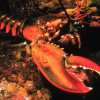
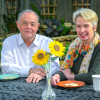
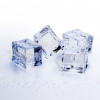
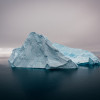
Comments
Add a comment